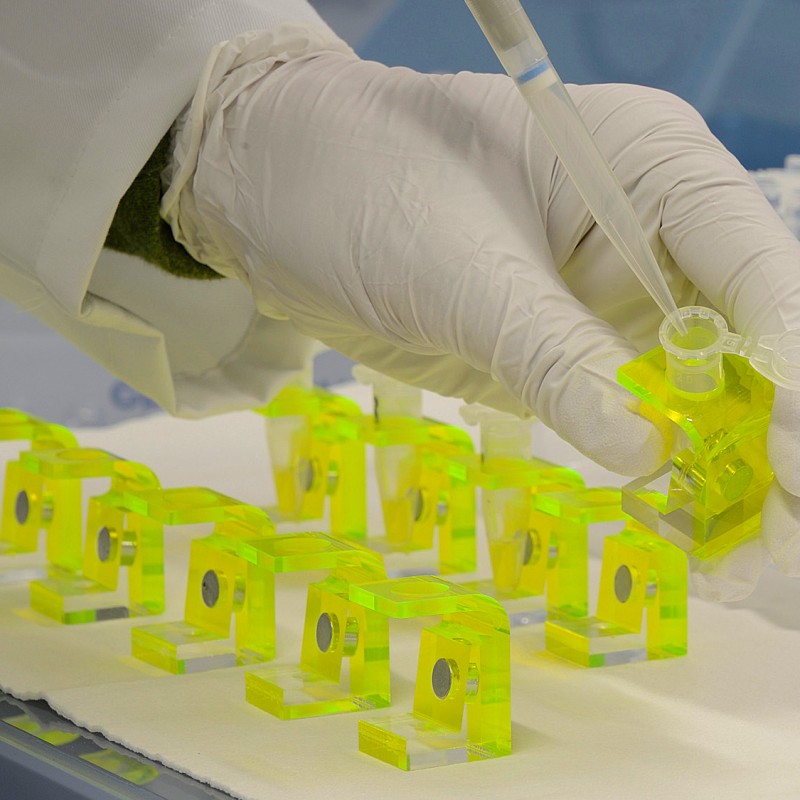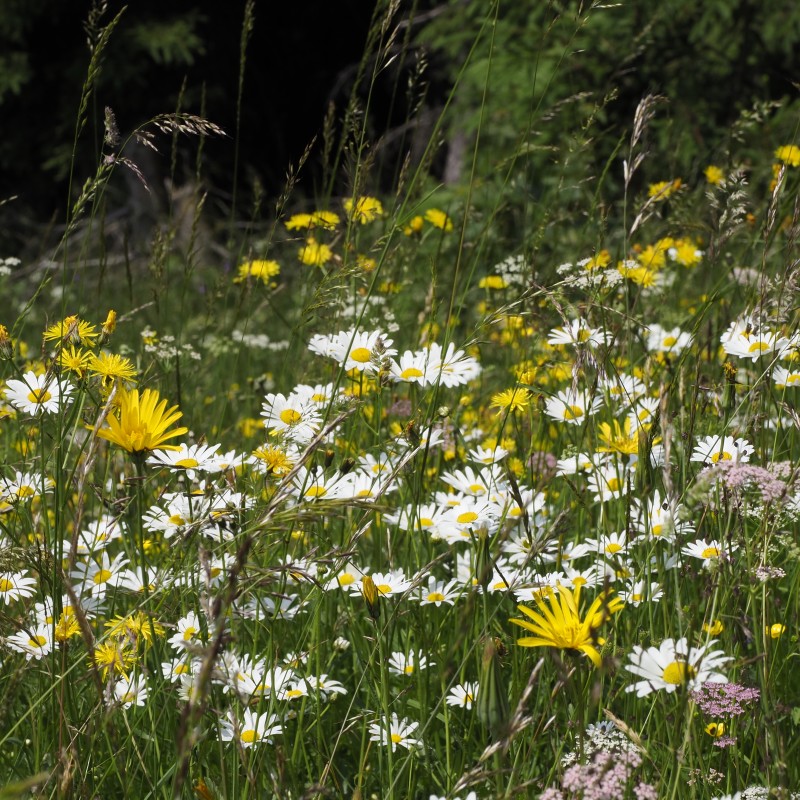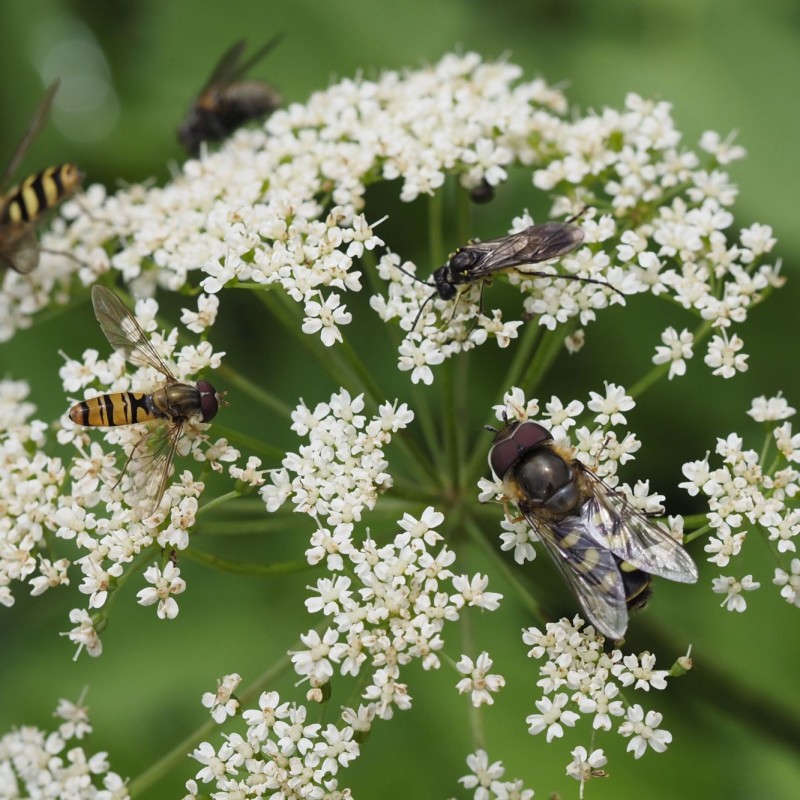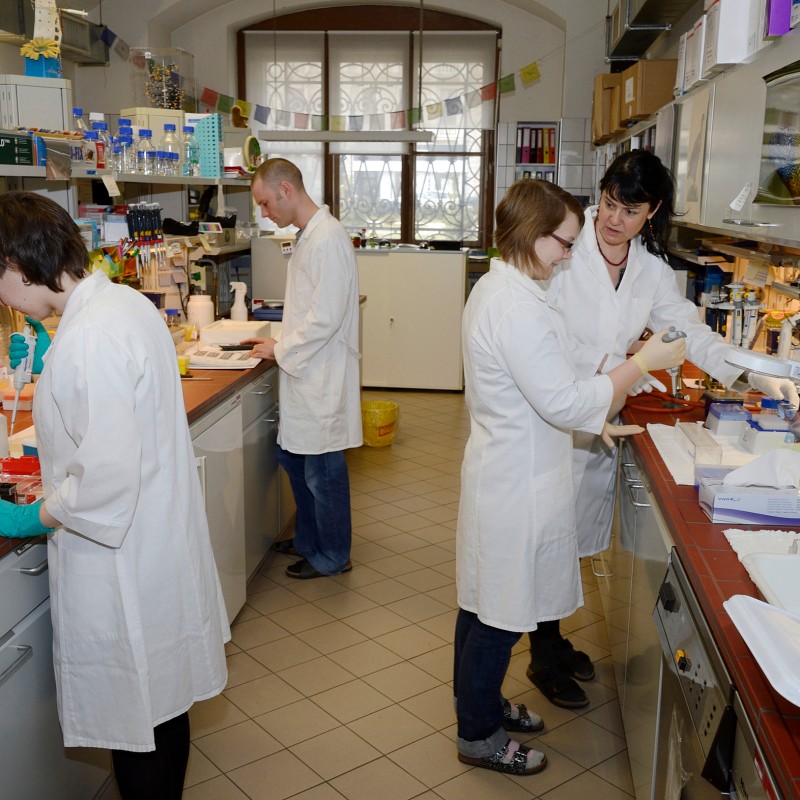ABOL - Austrian Barcode of Life: a mission for biodiversity in Austria
18. April 2024
ABOL, Austrian Barcode of Life, is the name of an Austria-wide initiative that has been dedicated to documenting the estimated
75,000 species of animals, plants and fungi living in Austria for 10 years.
As a rule, species are described and differentiated
on the basis of differences in external characteristics. In recent years, species identification based on appearance has been
supplemented by an innovative approach that utilises differences in DNA. ABOL (Austrian Barcode of Life) is a research initiative
at the Natural History Museum Vienna with the long-term goal of recording all animal, plant and fungal species in Austria
using DNA barcoding.
This initiative is entering its next round. Funding for ABOL coordination by the Federal Ministry of Education, Science and Research has been secured for a further three years.
In view of the ongoing extinction of species, the recording of species and the monitoring of changes have become increasingly important and ABOL has developed into a hub for biodiversity data in Austria.
The world around us is made up of fascinating and complex habitats in which countless species interact with each other to preserve the fragile balance of nature. ABOL is dedicated to this diversity as a research initiative that opens up a new horizon for biodiversity research.
Dr Nikolaus Szucsich, ABOL Manager at the NHM Vienna, is delighted with the extension: "We need efficient species identification more urgently than ever, especially for monitoring, and DNA barcoding is indispensable here. We can only identify species if reference data is available; it acts like a digital identification book.
ABOL has two interrelated goals: Firstly, the creation of a reference database of DNA barcodes that enables the identification of all animals, plants and fungi occurring in Austria; and secondly, the promotion and development of biodiversity research and taxonomy in general and of DNA barcoding applications in particular.
The key to this is DNA barcoding, a technology that enables the identification of organisms using short, standardised DNA sequences. This innovative approach simplifies the rapid and accurate identification of species. In addition to a wide range of applications, e.g. in research, nature conservation or agriculture and forestry, DNA barcoding projects also help to discover previously unknown species and track changes in the distribution of species.
The importance of this initiative extends far beyond the boundaries of science.
In times of rapid biodiversity loss, DNA barcoding plays a crucial role in the protection and monitoring of our environment. By precisely identifying species, we can better understand changes in ecosystems and take timely action to protect endangered species.
The ABOL initiative recently launched two new forward-looking projects - financed by the Biodiversity Fund of the Federal Ministry for Climate Action, Environment, Energy, Mobility and Technology:
One of these projects is "ABOL-RefDat", which aims to expand the reference database by creating at least 5,000 DNA barcodes of over 1,500 native species of animals, plants and fungi. The focus here is on pollinators, soil and aquatic organisms. By expanding the reference database in this way, "ABOL-RefDat" is making a significant contribution to the implementation of the National Biodiversity Strategy 2030 by enabling as many species as possible to be identified through DNA barcoding.
The second project is "GeMonA+", which already has "Genetic Monitoring" in its name and focusses on the development of efficient biodiversity monitoring using molecular genetic methods. It involves the automated monitoring of flying insects and the identification of flower and plant visitors using DNA traces left behind on the plants. Species identification is carried out by comparison with the reference database. Dr Nikolaus Szucsich adds: "The aim of GeMonA+ is to be able to record changes in diversity as quickly as possible so that we can react more quickly."
Take part in research & document species
The ABOL initiative at the NHM Vienna is organising the City Nature Challenge (CNC) for the 3rd time this year and is taking part in a friendly competition between cities and regions competing against each other. From 26 to 29 April 2024, everyone interested in nature can take part: Head out into the countryside with your smartphone in your luggage to document the wealth of species! The aim is to observe and document as many wild animals, plants and fungi as possible, to research biodiversity and to increase our collective and individual knowledge of biodiversity.
The City Nature Challenge is organised via the platform www.inaturalist.org. The following 13 cities and regions from all nine federal states in Austria are taking part this year: Amstetten – Waidhofen/Ybbs, Elsbeere Wienerwald, Graz bis Naturpark Südsteiermark, Industrieviertel, Innsbruck, Klagenfurt, Krems – Wachau – Melk, Nationalparkregion Gesäuse, Neusiedler See/Seewinkel, Salzburg (observation.org), St. Pölten, Vorarlberg (inaturalist & observation.org) and Wien
Dr Elisabeth Haring, the ABOL project manager at the NHM Vienna, emphasises: "ABOL not only sets milestones in biodiversity research, but also acts as a crucial tool in the global effort to keep our ecosystems functioning. And with the Citizen Science programme, we want to encourage citizens to support research with data and thus make an important contribution to science and species conservation".
Links:
https://www.abol.ac.at/
https://www.citynaturechallenge.at/
https://www.inaturalist.org/
Press material:
https://www.nhm-wien.ac.at/presse/pressemitteilungen2024/abolverlängerung
This initiative is entering its next round. Funding for ABOL coordination by the Federal Ministry of Education, Science and Research has been secured for a further three years.
In view of the ongoing extinction of species, the recording of species and the monitoring of changes have become increasingly important and ABOL has developed into a hub for biodiversity data in Austria.
The world around us is made up of fascinating and complex habitats in which countless species interact with each other to preserve the fragile balance of nature. ABOL is dedicated to this diversity as a research initiative that opens up a new horizon for biodiversity research.
Dr Nikolaus Szucsich, ABOL Manager at the NHM Vienna, is delighted with the extension: "We need efficient species identification more urgently than ever, especially for monitoring, and DNA barcoding is indispensable here. We can only identify species if reference data is available; it acts like a digital identification book.
ABOL has two interrelated goals: Firstly, the creation of a reference database of DNA barcodes that enables the identification of all animals, plants and fungi occurring in Austria; and secondly, the promotion and development of biodiversity research and taxonomy in general and of DNA barcoding applications in particular.
The key to this is DNA barcoding, a technology that enables the identification of organisms using short, standardised DNA sequences. This innovative approach simplifies the rapid and accurate identification of species. In addition to a wide range of applications, e.g. in research, nature conservation or agriculture and forestry, DNA barcoding projects also help to discover previously unknown species and track changes in the distribution of species.
The importance of this initiative extends far beyond the boundaries of science.
In times of rapid biodiversity loss, DNA barcoding plays a crucial role in the protection and monitoring of our environment. By precisely identifying species, we can better understand changes in ecosystems and take timely action to protect endangered species.
The ABOL initiative recently launched two new forward-looking projects - financed by the Biodiversity Fund of the Federal Ministry for Climate Action, Environment, Energy, Mobility and Technology:
One of these projects is "ABOL-RefDat", which aims to expand the reference database by creating at least 5,000 DNA barcodes of over 1,500 native species of animals, plants and fungi. The focus here is on pollinators, soil and aquatic organisms. By expanding the reference database in this way, "ABOL-RefDat" is making a significant contribution to the implementation of the National Biodiversity Strategy 2030 by enabling as many species as possible to be identified through DNA barcoding.
The second project is "GeMonA+", which already has "Genetic Monitoring" in its name and focusses on the development of efficient biodiversity monitoring using molecular genetic methods. It involves the automated monitoring of flying insects and the identification of flower and plant visitors using DNA traces left behind on the plants. Species identification is carried out by comparison with the reference database. Dr Nikolaus Szucsich adds: "The aim of GeMonA+ is to be able to record changes in diversity as quickly as possible so that we can react more quickly."
Take part in research & document species
The ABOL initiative at the NHM Vienna is organising the City Nature Challenge (CNC) for the 3rd time this year and is taking part in a friendly competition between cities and regions competing against each other. From 26 to 29 April 2024, everyone interested in nature can take part: Head out into the countryside with your smartphone in your luggage to document the wealth of species! The aim is to observe and document as many wild animals, plants and fungi as possible, to research biodiversity and to increase our collective and individual knowledge of biodiversity.
The City Nature Challenge is organised via the platform www.inaturalist.org. The following 13 cities and regions from all nine federal states in Austria are taking part this year: Amstetten – Waidhofen/Ybbs, Elsbeere Wienerwald, Graz bis Naturpark Südsteiermark, Industrieviertel, Innsbruck, Klagenfurt, Krems – Wachau – Melk, Nationalparkregion Gesäuse, Neusiedler See/Seewinkel, Salzburg (observation.org), St. Pölten, Vorarlberg (inaturalist & observation.org) and Wien
Dr Elisabeth Haring, the ABOL project manager at the NHM Vienna, emphasises: "ABOL not only sets milestones in biodiversity research, but also acts as a crucial tool in the global effort to keep our ecosystems functioning. And with the Citizen Science programme, we want to encourage citizens to support research with data and thus make an important contribution to science and species conservation".
Links:
https://www.abol.ac.at/
https://www.citynaturechallenge.at/
https://www.inaturalist.org/
Press material:
https://www.nhm-wien.ac.at/presse/pressemitteilungen2024/abolverlängerung





